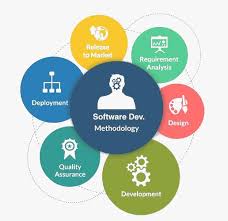The Importance of High-Quality Software
In today’s digital age, high-quality software plays a crucial role in the success of businesses across industries. Whether it’s a mobile application, a web platform, or an enterprise system, the quality of software can make or break the user experience and ultimately impact the bottom line.
Reliability and Performance
One of the key benefits of high-quality software is its reliability. Users expect software to work seamlessly without crashes or errors. Reliable software not only enhances user satisfaction but also builds trust in the brand. Additionally, high-quality software performs efficiently, delivering optimal speed and performance even under heavy usage.
Security and Data Protection
Security is a top concern for businesses today, especially with the increasing number of cyber threats. High-quality software is built with robust security measures to protect sensitive data and prevent unauthorized access. By investing in secure software solutions, businesses can safeguard their information and maintain compliance with data protection regulations.
User Experience and Engagement
User experience (UX) is paramount in today’s competitive market. High-quality software is designed with a focus on usability, intuitive navigation, and engaging features that enhance the overall user experience. A positive UX not only attracts users but also encourages repeat usage and customer loyalty.
Maintenance and Scalability
High-quality software is easier to maintain and scale as business needs evolve. Well-structured code, clear documentation, and regular updates ensure that the software remains functional and adaptable over time. Scalable software can accommodate growth without compromising performance or stability.
Conclusion
Investing in high-quality software is essential for businesses looking to stay competitive in today’s digital landscape. From reliability and security to user experience and scalability, quality software offers numerous benefits that positively impact both users and organizations. By prioritizing quality in software development, businesses can drive innovation, efficiency, and success.
7 Benefits of High-Quality Software: Boosting Performance, Security, and User Satisfaction
- Enhanced reliability for seamless performance
- Robust security measures to protect sensitive data
- Optimal speed and performance under heavy usage
- Improved user experience with intuitive design
- Scalability to accommodate business growth
- Easier maintenance for long-term sustainability
- Increased customer trust and loyalty
Challenges of High-Quality Software: Balancing Cost, Time, and Complexity
- Higher initial cost compared to lower-quality software
- Potential longer development time due to rigorous testing and quality assurance processes
- May require specialized expertise for maintenance and updates
- Compatibility issues with older systems or hardware due to advanced features
- Over-engineering leading to unnecessary complexity for simple tasks
Enhanced reliability for seamless performance
Enhanced reliability is a crucial pro of high-quality software, ensuring seamless performance and consistent functionality. Users rely on software to work smoothly without interruptions or errors, and high-quality software delivers on this expectation by minimizing downtime and system failures. By prioritizing reliability in software development, businesses can build trust with their users, improve user satisfaction, and maintain a competitive edge in the market. Consistent performance leads to increased productivity, reduced frustration, and ultimately contributes to the overall success of the software application or system.
Robust security measures to protect sensitive data
High-quality software incorporates robust security measures to safeguard sensitive data from unauthorized access and cyber threats. By prioritizing data protection, businesses can instill trust in their users and ensure compliance with privacy regulations. Implementing strong encryption, authentication protocols, and regular security updates not only protects valuable information but also helps mitigate the risks of data breaches and cyber attacks. In today’s digital landscape, where data security is paramount, investing in high-quality software with robust security features is essential for maintaining the integrity and confidentiality of sensitive data.
Optimal speed and performance under heavy usage
High-quality software excels in providing optimal speed and performance even under heavy usage, ensuring a seamless user experience regardless of the workload. This pro of high-quality software not only enhances user satisfaction but also demonstrates the robustness and efficiency of the software solution. By maintaining consistent speed and performance levels during peak usage periods, high-quality software enables users to work efficiently without experiencing lags or delays, ultimately boosting productivity and overall user engagement.
Improved user experience with intuitive design
High-quality software with intuitive design significantly enhances the user experience by providing a seamless and user-friendly interface. Intuitive design elements such as clear navigation, logical workflows, and interactive features make it easier for users to engage with the software effortlessly. This improved user experience not only increases user satisfaction but also encourages continued usage and fosters customer loyalty. By prioritizing intuitive design in software development, businesses can create a positive interaction environment that resonates with users and sets their product apart in a competitive market.
Scalability to accommodate business growth
High-quality software offers the advantage of scalability, allowing businesses to seamlessly expand and adapt to growth opportunities. By designing software with scalability in mind, organizations can easily accommodate increased user traffic, data volume, and functionality requirements without compromising performance or stability. This flexibility ensures that the software remains efficient and effective as the business evolves, providing a solid foundation for sustained growth and success.
Easier maintenance for long-term sustainability
High-quality software offers the advantage of easier maintenance for long-term sustainability. Well-structured code, clear documentation, and regular updates make it simpler to manage and support the software over time. This ease of maintenance ensures that the software remains functional, adaptable, and efficient as business needs evolve. By investing in high-quality software, organizations can reduce the time and resources required for upkeep, ultimately enhancing the longevity and sustainability of their digital solutions.
Increased customer trust and loyalty
High-quality software fosters increased customer trust and loyalty by providing a reliable and seamless user experience. When customers encounter software that functions flawlessly, delivers on its promises, and prioritizes data security, they are more likely to trust the brand behind it. This trust leads to enhanced customer loyalty as users continue to engage with the software, recommend it to others, and remain loyal to the brand for future needs. Ultimately, the positive relationship built on trust and reliability can result in long-term customer retention and advocacy for the business.
Higher initial cost compared to lower-quality software
When considering the con of high-quality software, one significant drawback is the higher initial cost associated with it compared to lower-quality software options. Businesses may face budget constraints or financial challenges when investing in high-quality software solutions that come with a premium price tag. While the upfront cost may be a barrier for some organizations, it is important to weigh this against the long-term benefits and returns that quality software can provide in terms of reliability, performance, security, and user satisfaction. Making informed decisions about software investments involves considering not just the immediate expenses but also the value and impact that high-quality software can deliver over time.
Potential longer development time due to rigorous testing and quality assurance processes
One drawback of high-quality software is the potential for longer development time as a result of rigorous testing and quality assurance processes. While thorough testing is essential to ensure that the software meets quality standards and functions reliably, it can also extend the development timeline. The meticulous nature of quality assurance activities, such as testing for various scenarios and identifying and fixing bugs, may require additional time and resources. Despite the delay in delivery, prioritizing quality in software development ultimately leads to a more robust and reliable end product that can benefit users in the long run.
May require specialized expertise for maintenance and updates
One potential drawback of high-quality software is that it may require specialized expertise for maintenance and updates. Due to the complex nature of advanced software systems, regular maintenance and updates often necessitate skilled professionals with specific technical knowledge. This can lead to higher costs associated with hiring or training personnel capable of effectively managing and enhancing the software over time. Additionally, reliance on specialized expertise can introduce dependencies that may pose challenges in the event of staff turnover or limited availability of qualified professionals.
Compatibility issues with older systems or hardware due to advanced features
One drawback of high-quality software is the potential compatibility issues it may pose with older systems or hardware that lack the necessary capabilities to support advanced features. As software evolves to incorporate cutting-edge technologies and functionalities, older devices or operating systems may struggle to keep up, leading to performance issues, glitches, or incompatibility errors. This can create challenges for users who rely on outdated equipment and may require them to upgrade their hardware or software to fully utilize the benefits of high-quality applications.
Over-engineering leading to unnecessary complexity for simple tasks
One potential drawback of high-quality software is the risk of over-engineering, which can result in unnecessary complexity for simple tasks. When developers focus too much on creating a robust and feature-rich solution, they may inadvertently introduce layers of complexity that exceed the actual requirements of the task at hand. This can lead to bloated code, longer development times, and increased maintenance efforts. Striking a balance between quality and simplicity is key to avoiding over-engineering and ensuring that software remains efficient and user-friendly, even for basic functionalities.


